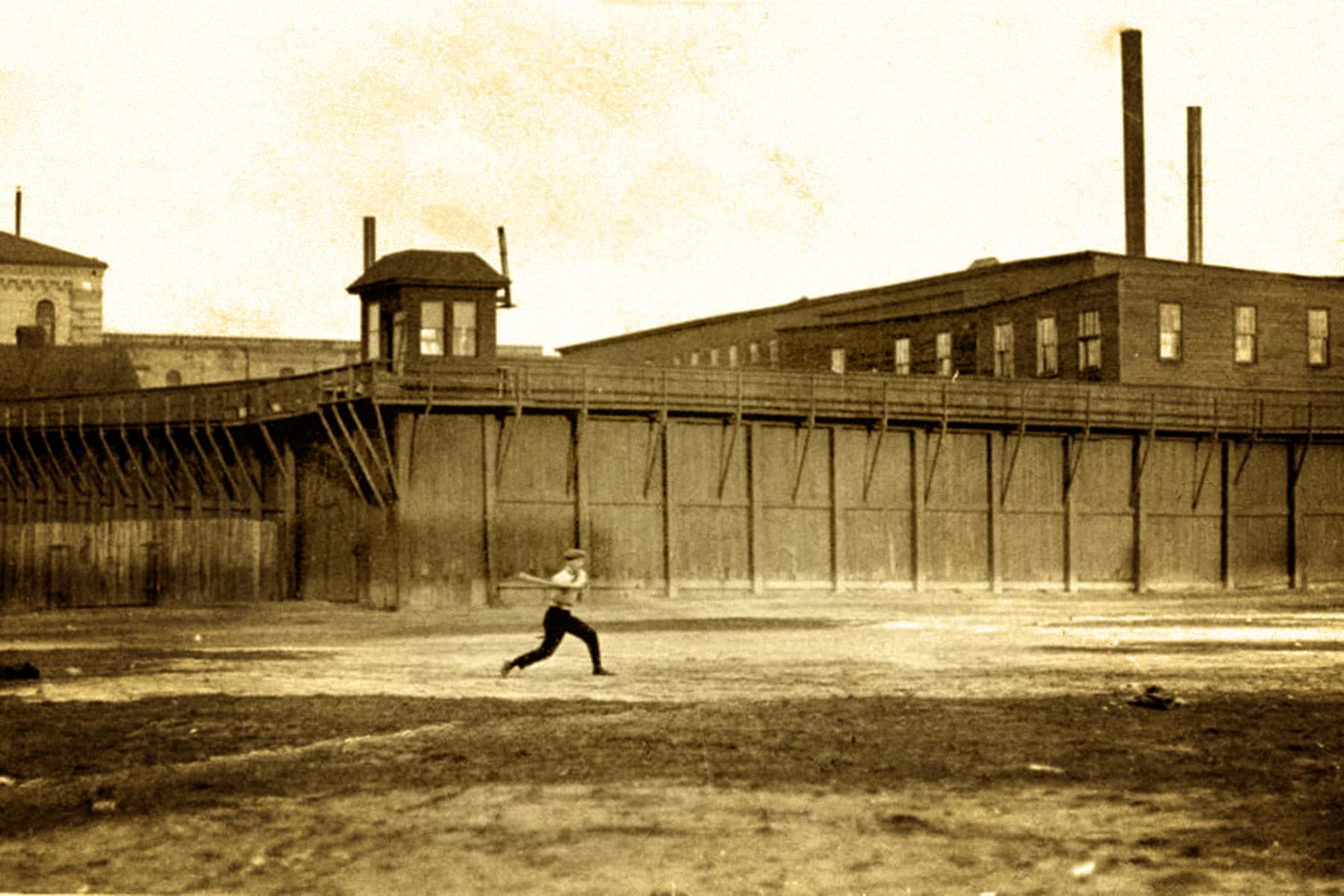
In 1879, Milwaukeeans were shocked to learn of abusive treatment at the county-operated House of Corrections. Inmates, they learned, were routinely fed rotting meat, physically and verbally abused by guards, and could be punished with solitary confinement in a small, darkened cell for as long as 20 days at a time for infractions as minor as talking.
Initially reported by the Milwaukee Sentinel, the accusations were so serious that the then-governor of Wisconsin, William E. Smith, directed the State Board of Charities and Reform to conduct an investigation. After a month of hearings in Milwaukee and sworn testimony from one-hundred and forty-five witnesses, the board found ample evidence of abusive treatment and unsafe food but also identified a more fundamental problem.
“One of the worst features of the management under the present system is, that all classes of inmates are treated alike,” wrote board members wrote in their report to governor. “The person sent there in default of the payment of a fine, for violation of a city ordinance, has his head shaved, is clothed in prison garb, and is put to work alongside the hardened villain who is sent there for a term of years for any crime except murder.
“Inability to pay a fine on the part of any citizen, although the offense is a simple one, like the case of the citizen who was sent to the House of Correction for failing to pay a dog tax on a dog he did not own, subjects the victim to the same treatment that is meted out to burglars.”
The prison was overcrowded and vermin-infested, and the inmates were indescribably filthy—many went for months at a time without being allowed the opportunity to bathe.
Adding considerably to the problems at the House of Corrections was an overly-thrifty County Board of Supervisors, which allocated just $3 per prisoner per week to run the facility. From this meager budget, the jail was expected to pay the guards, maintain the buildings, and supply all the food, clothing, and medical needs of the more than one-hundred inmates. There was even a report county supervisor removed the line item for soap from the jail’s budget.
“The Milwaukee County Board,” the state report added dryly, “has reduced economy to a very fine point.”
Originally the “House of Refuge of Milwaukee County” and organized in 1855, the facility was intended to be used for “the safe-keeping, reformation, and employment of vagrants.” In 1866, the law was amended to allow incarceration of any person convicted in municipal court, making the House of Correction effectively a prison. Most sentences ranged from a week to three years. Those convicted of more serious offenses were incarcerated in the state penal system.
In 1866, the county built an imposing stone cell building on Milwaukee’s South Side. The facility also included a separate prison workshop building (the county used inmate labor to make chairs, which were sold to help defray the cost of running the prison), all surrounded by a sixteen-foot-high wall patrolled by guards.
At first, the new House of Correction operated well. On previous visits, one as late as 1871, the State Board of Charities and Reform had found the institution clean and orderly but noted that discipline was very strict. Inmates were not allowed to speak to each other and were confined to their cells when not working, being marched out only at meal time.
Conditions declined year after year until the scandal of 1879 erupted. The state board noting, “The Milwaukee House of Correction, under the management of such an irresponsible body as the County Board of Supervisors, has steadily retrograded until the conduct of its officers towards the prisoners has been characterized by profanity, kicks, cuffs, and clubs.”
Prisoners were frequently punished with being gagged. Those who resisted had the gag forced so roughly into their months that their lips were torn. The gag was, the board reported, “one of the relics of the barbarous ages.”
Far worse punishment awaited those confined to the “dark cells.”
The west wing of the prison contained at its corners solitary confinement cells called the dark cells or the dungeons. Measuring five feet, six inches long, four feet, three inches wide, and six feet, ten inches high, the cells were unlighted, poorly heated in winter, and contained no bedding. Prisoners were fed only bread and water during their time in the dark cells. A bucket was provided for bodily waste but was never emptied during their confinement.
“Now the evidence in cumulative that these ‘black holes’ were in common use; that from one to six days’ confinement therein was frequent—that twenty days was not unusual,” the board reported. “In these unventilated cells, in addition to the natural poisoning of the air by breathing; the fetid, sickening odors from the unemptied buckets were inhaled for days at time. No wonder, as John Frommel, an ex-guard, testified, that as he frequently opened the doors to the dark cell to give inmates food, ‘The atmosphere was very strong.’”
Dr. E.B. Wolcott, surgeon general of the state, told the board, “No person could be confined in these cells for any great length of time without having health impaired.”
Then there was the matter of “prisoner’s meat.”
The prison was supplied with meat under a contract issued by the County Board of Supervisors agreeing to pay six cents per pound for meat intended for officers and three cents per pound for prisoner’s meat.
Even by 1870s prices, that amount was far too low. The state investigators wrote, “When these contracts first came under our notice, we were prepared for all that followed in the line for proof, tainted, worthless, refuse meat being taken to the House of Correction.”
Employees of the meat contractor, a man named Munkwitz, testified that the meat was generally unsalable scraps from the butcher’s block, allowed to pile up for two or three days and then gathered together, fifty or a hundred pounds at a time, and taken to the House of Correction, “bones, leavings, hearts and kidneys, veal and lamb, all went together in the same mass.”
“The county board is primarily and principally to blame for all the spoiled and bad meat furnished and disgraced itself and the county by making the three-cent contract. The convicts got what was contracted for, ‘prisoner’s meat.’ The contractor furnished what he intended to under his contract, and the putrid meat came almost as a matter of course.”
In their report’s concluding section, state investigators wrote, “The mass of evidence shows that the conduct of the institution has gone from bad to worse, and Milwaukee city and county may thank the accidental discovery of this hideous sore on the body politic, for a chance to remedy these long-standing evils.”
And it seems many of the worst evils were addressed. In a report filed three years later, in 1882, the State Board of Charities and Reform noted the county had extended sewers to the facility, constructed a two-story addition to the chair factory, and added 112 cells for a total of 272 cells. Also new were two well-equipped hospital rooms, and a combined kitchen and bakery that the board regarded as “first-class in all its appointments.”
More significantly, the prison’s new inspector, Florian J. Ries, was on record saying, “My experience has fully convinced me that by kind treatment and by appealing to the better instincts of human nature, better results can be obtained than in any other way.”
The 1882 report concluded, “The House of Corrections has been made one of the most orderly and successful prisons of its class in the country.”
The original House of Corrections closed in 1917 when Milwaukee County opened a new facility near the intersection of West Silver Spring Drive and North Sherman Boulevard. The original prison on Windlake Road was demolished and the site is now occupied by Hayes Bilingual School. After a further move, in the mid-1940s, this time to Franklin, the Sherman Boulevard site eventually became Havenwoods State Forest.













